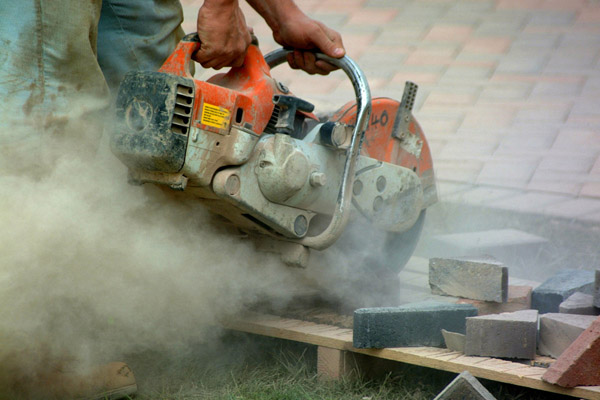The Control of Substances Hazardous to Health Regulations 2002 (COSHH) require employers to ensure that exposure is prevented or, where this is not reasonably practicable, adequately controlled. This guidance gives practical advice on how this can be achieved by applying the principles of good practice for the control of exposure to substances hazardous to health, as required by COSHH.
It is aimed at people whose responsibilities include the management of substances hazardous to health at work (eg occupational health specialists, anyone undertaking COSHH assessments, supervisors and is also useful for trade union and employee safety representatives). It will help you carry out COSHH assessments, review existing assessments, deliver training and supervise activities involving substances hazardous to health.
Hazards
Silica dust is a hazardous substance. The dust can be very fine and if it gets deep into the lungs, it can cause serious lung diseases like:
- lung cancer;
- silicosis;
- chronic obstructive pulmonary disease (COPD).
These diseases cause permanent disability and early death. The risk is often from exposure over many years. You may not notice symptoms for a long time. Each exposure to dust during this time adds up with lungs and airways getting progressively more and more damaged. Unfortunately, by the time you do notice, the damage is often done. These diseases can be made worse by smoking.
Silica is only a risk once it forms fine respirable dust. The greater the level of dust in air, the higher the risk. High dust levels are caused by one or more of the following:
- Task – high energy tools, such as cut-off saws, grinders, wall chasers and grit blasters can produce a lot of dust in a very short time. Dry sweeping can make a lot of dust when compared to vacuuming or wet brushing.
- Location – the more enclosed a space, the more the dust will build up.
However, do not assume that levels will be low when working outside with high energy tools.
- Time – the longer the time dust is created the more dust there will be.
- Frequency – regularly doing the same work day-after-day increases the risks.
The table below gives typical amounts of silica in common construction materials
The CN series describes good practice for controlling exposure to silica dust in the construction industry. The sheets cover the key points you need to follow to reduce exposure to an adequate level. Follow all the points, or use equally effective measures to comply with workplace exposure limits (WELs).The HSE have produced advice sheets to help employers assess and control risks from hazardous substances in the workplace. For some common tasks the sheets take into account the health hazards (and exposure potential) of substances used or produced to identify an approach appropriate to control the risks.
What the sheets cover Reducing exposure to an adequate level always involves a mixture of equipment and ways of working. This means employers should:
- choose the most effective and reliable control measures;
- make sure they are used properly by instructing, training and supervising workers; use regular maintenance to make sure control measures keep on working;
- check and review all elements of control measures regularly for their continued effectiveness.
Each sheet gives advice on how to achieve this for a particular task
Download each task sheet by clicking on the hyperlinks below:
- CN2 – Chasing with hand-held power tools
- CN3 – Drilling and coring with hand-held rotary power tools
- CN4 – Crushing and screening
- CN5 – Clearing and removing rubble
- CN6 – Cutting paving and kerbstones with rotary cutters
- CN7 – Abrasive blasting
- CN8 – Tunnelling and shaft sinking
- CN9 – Pneumatic breaker in poor ventilation (eg indoors)
Contact C&C Consulting if you wish to discuss or review your controls for managing silica exposure to your employees.












